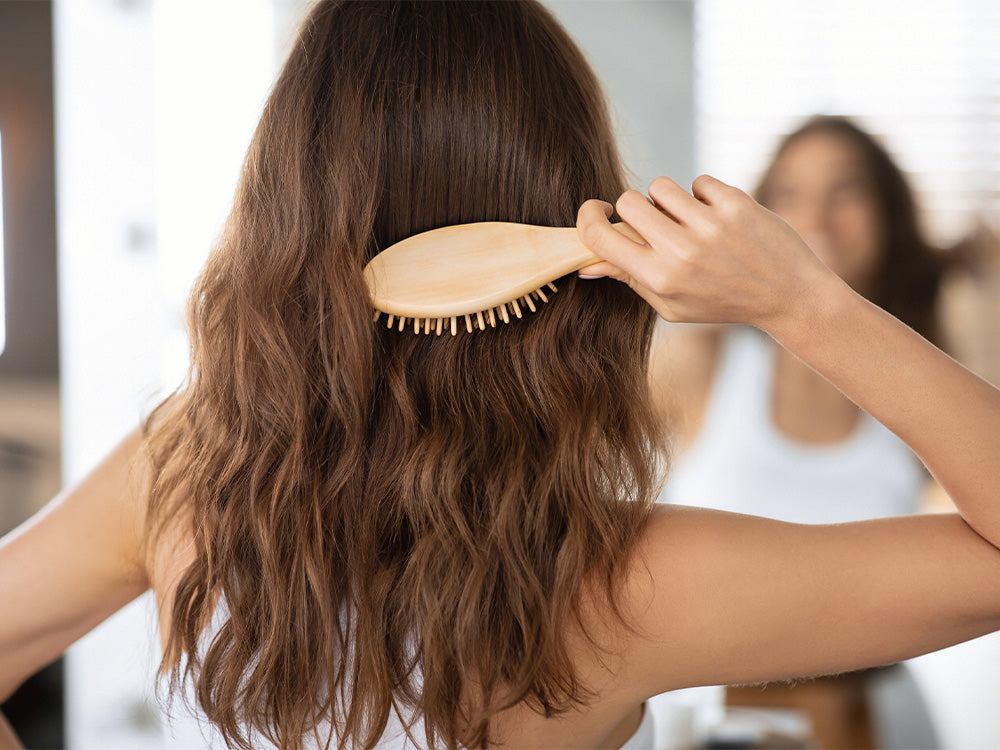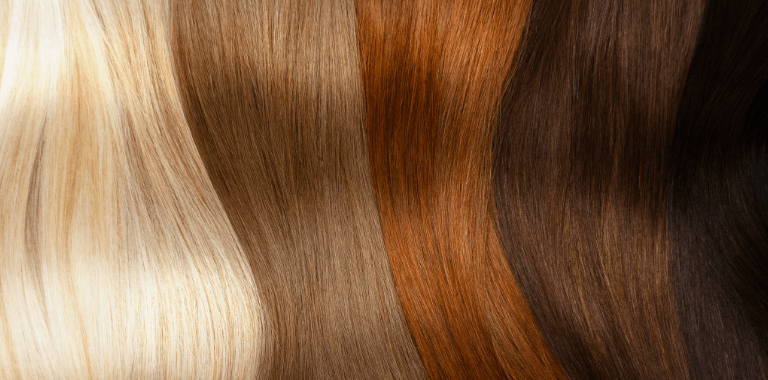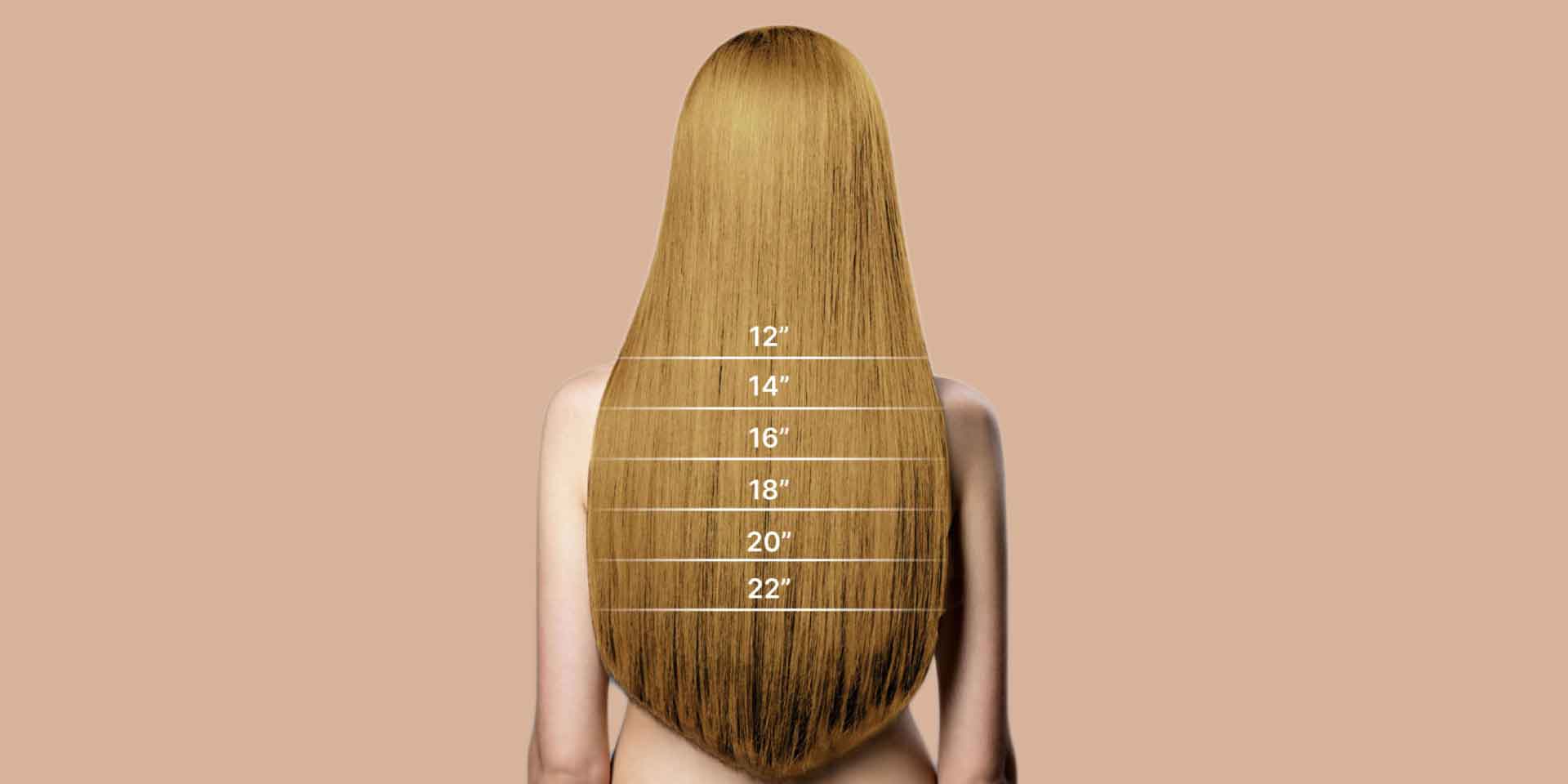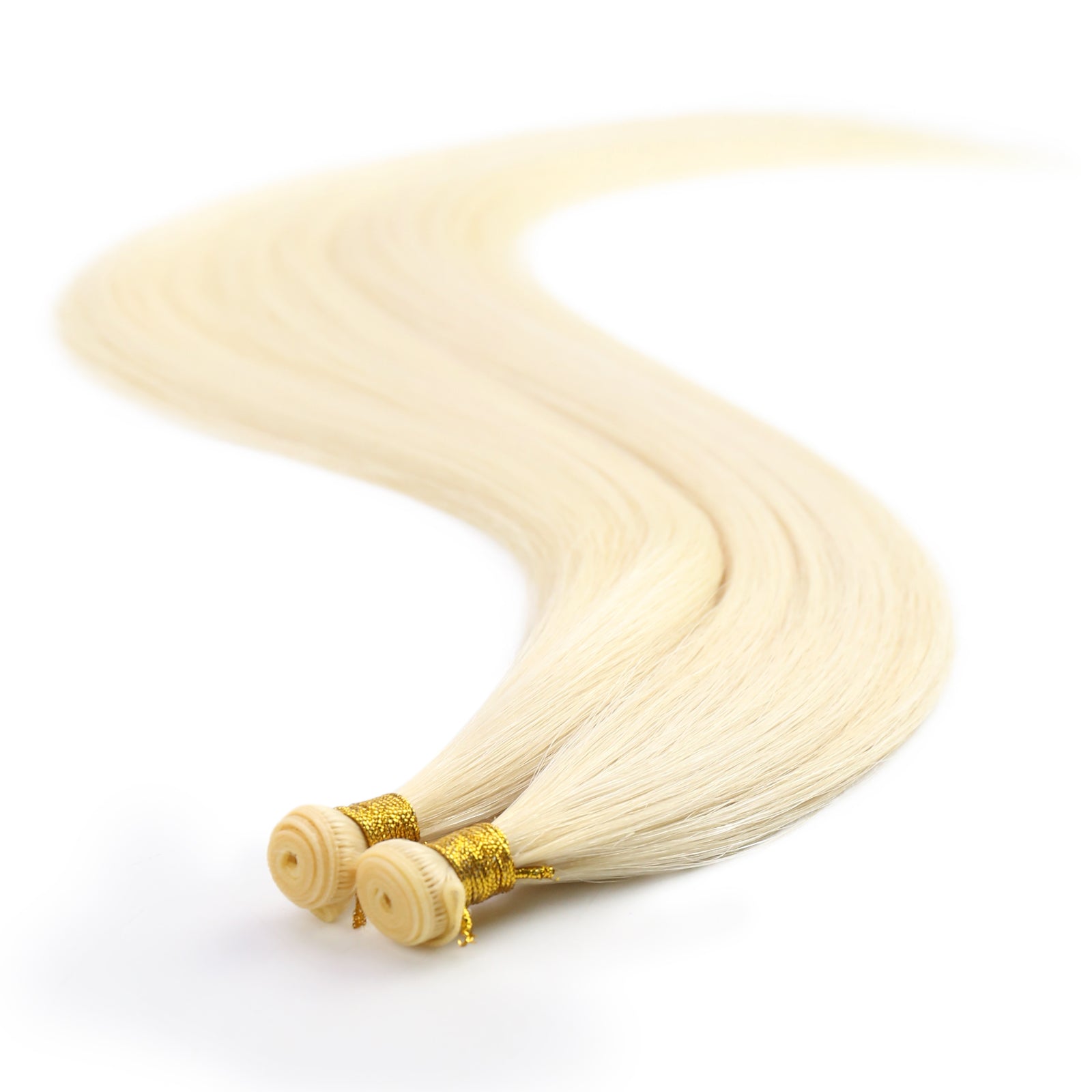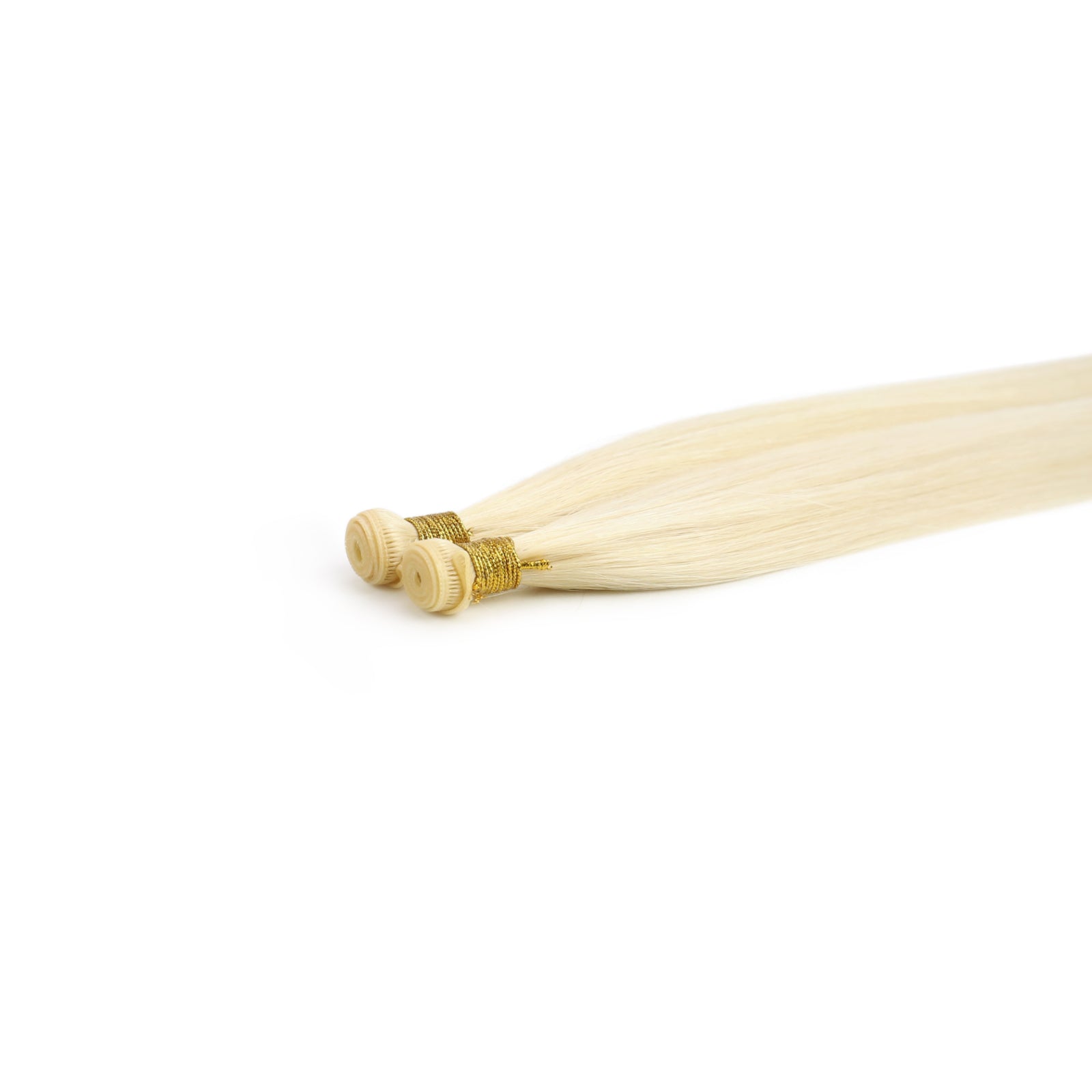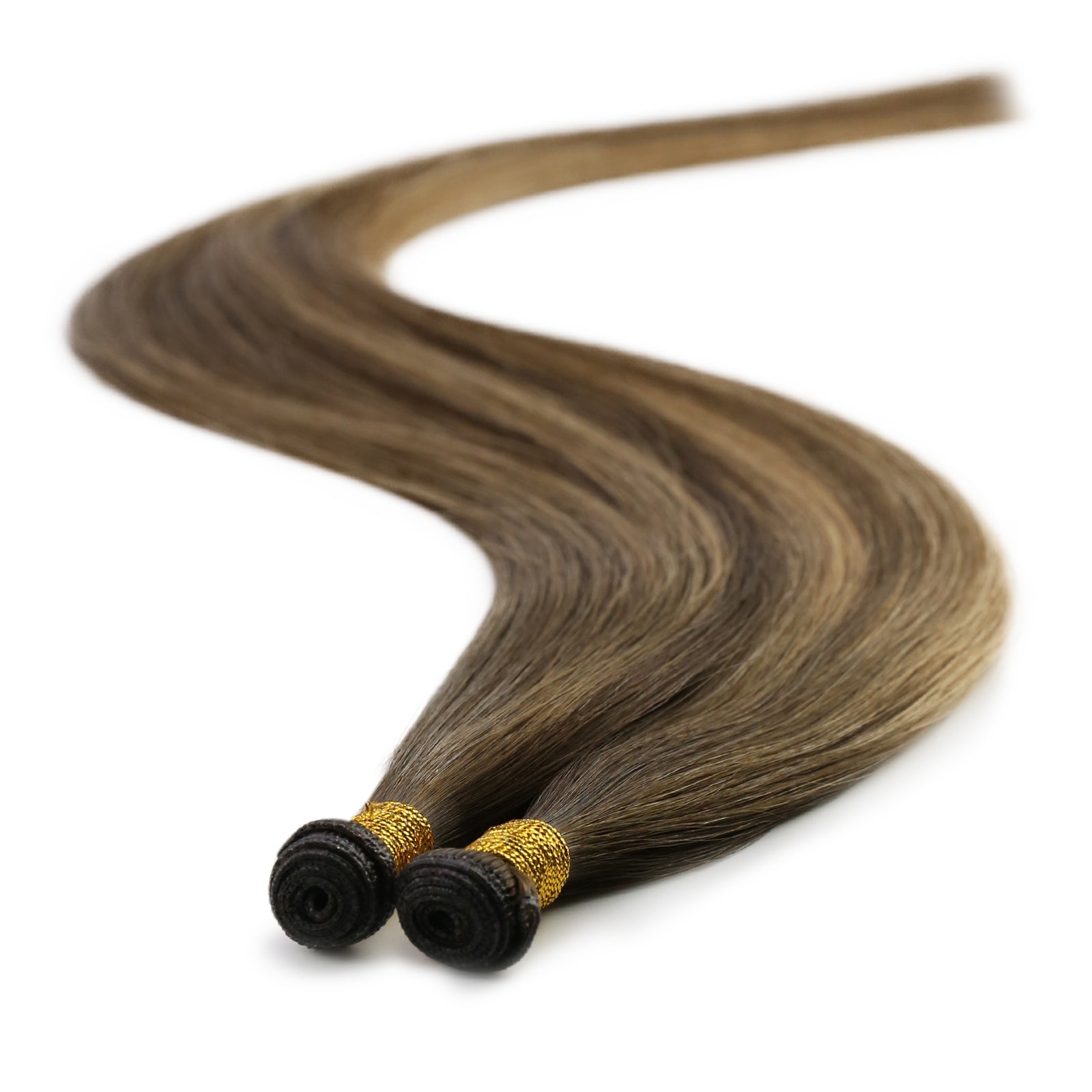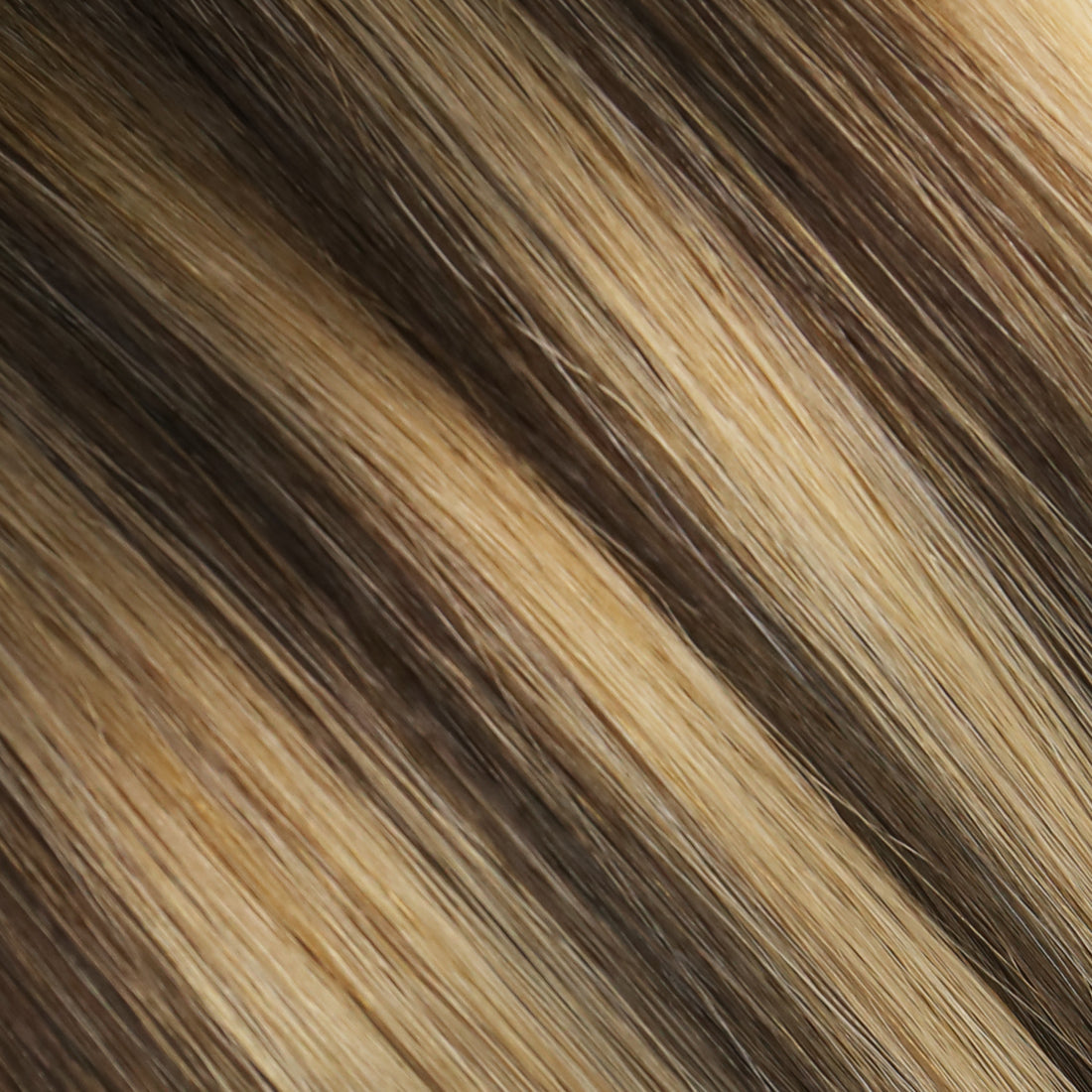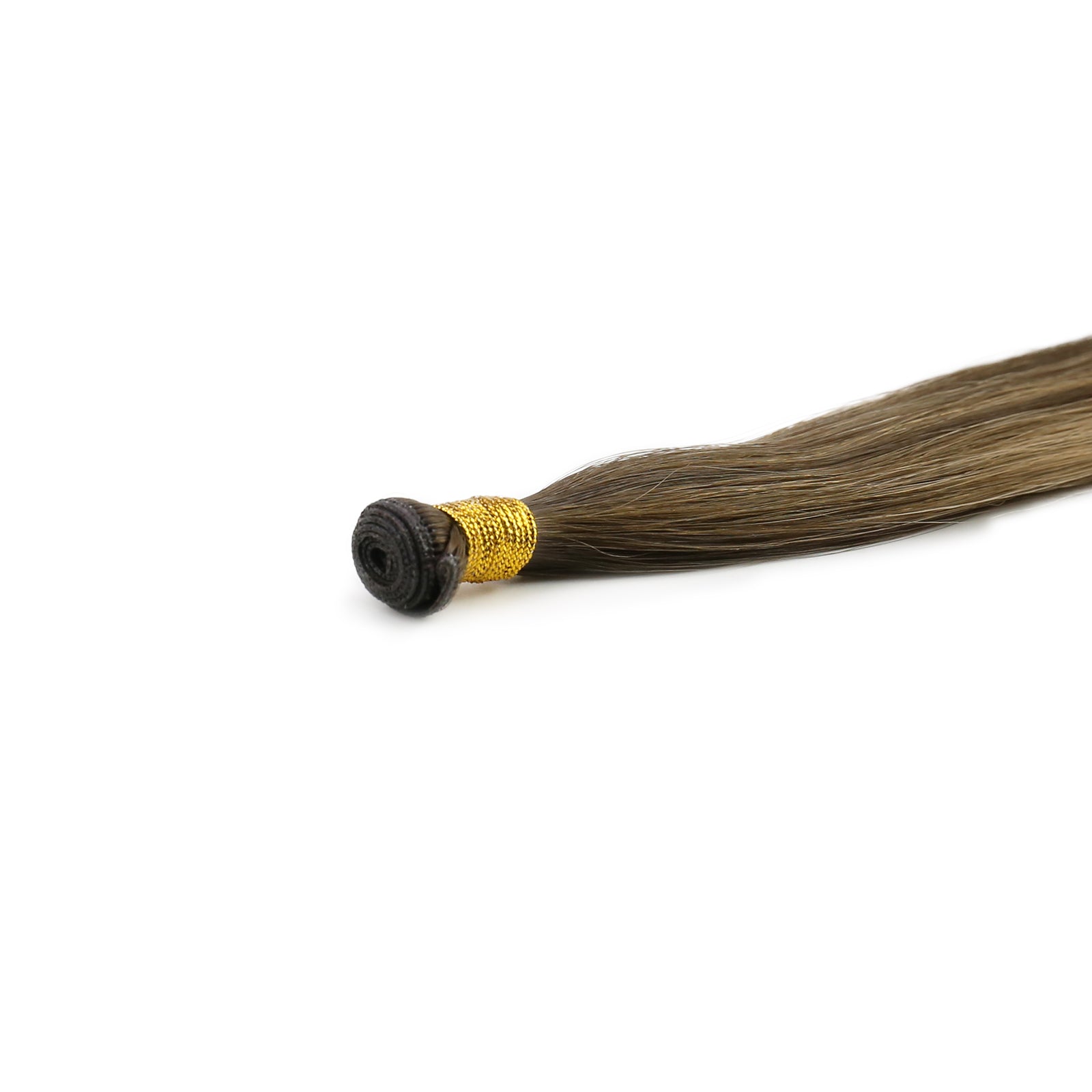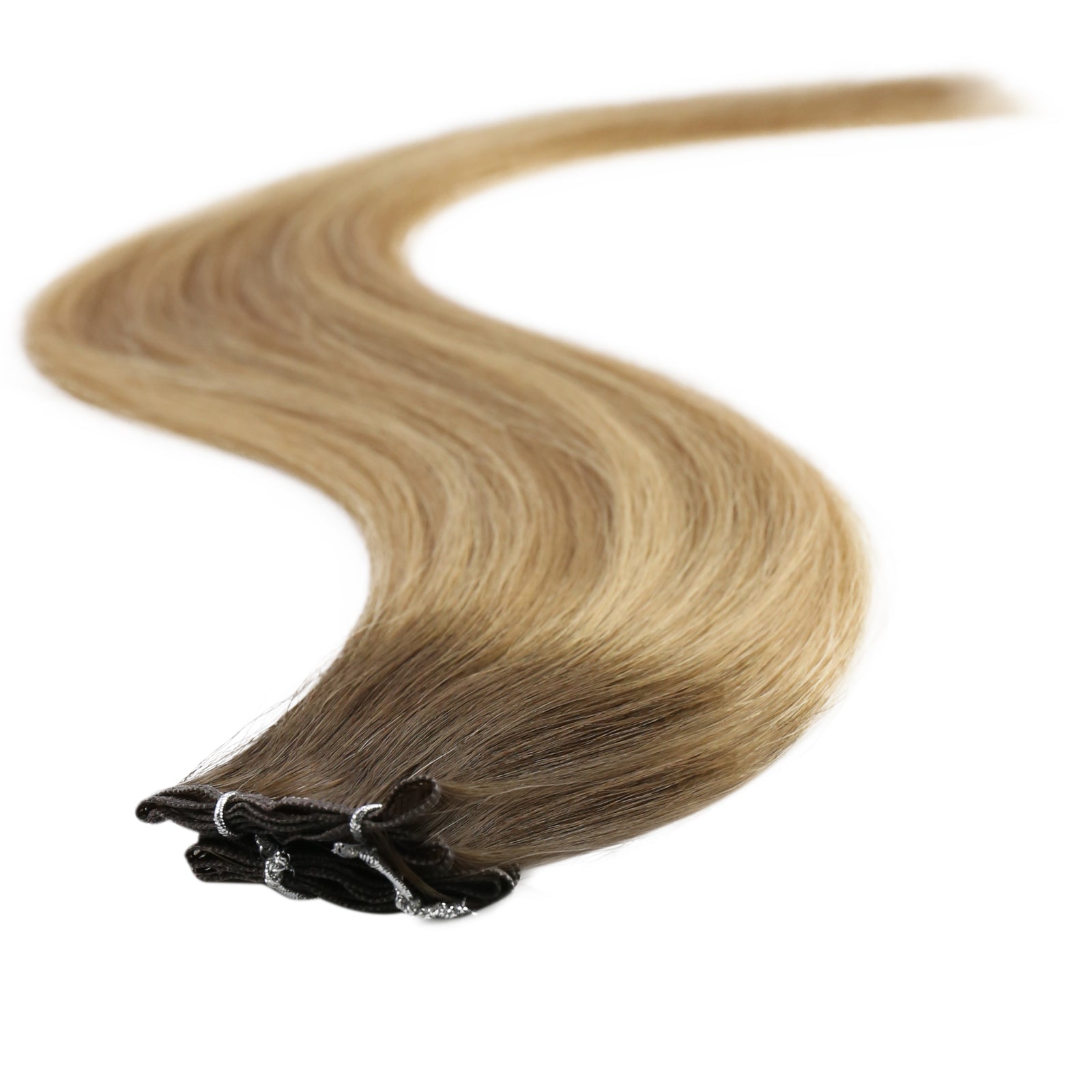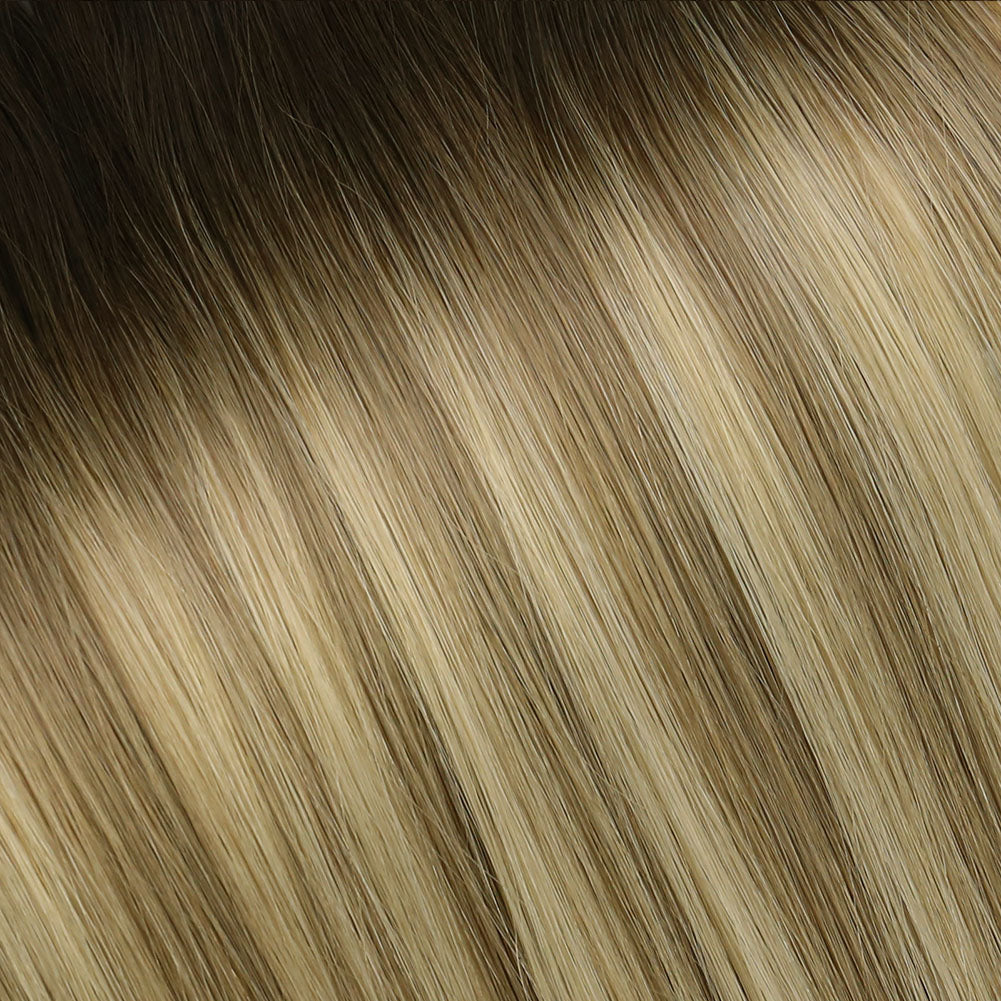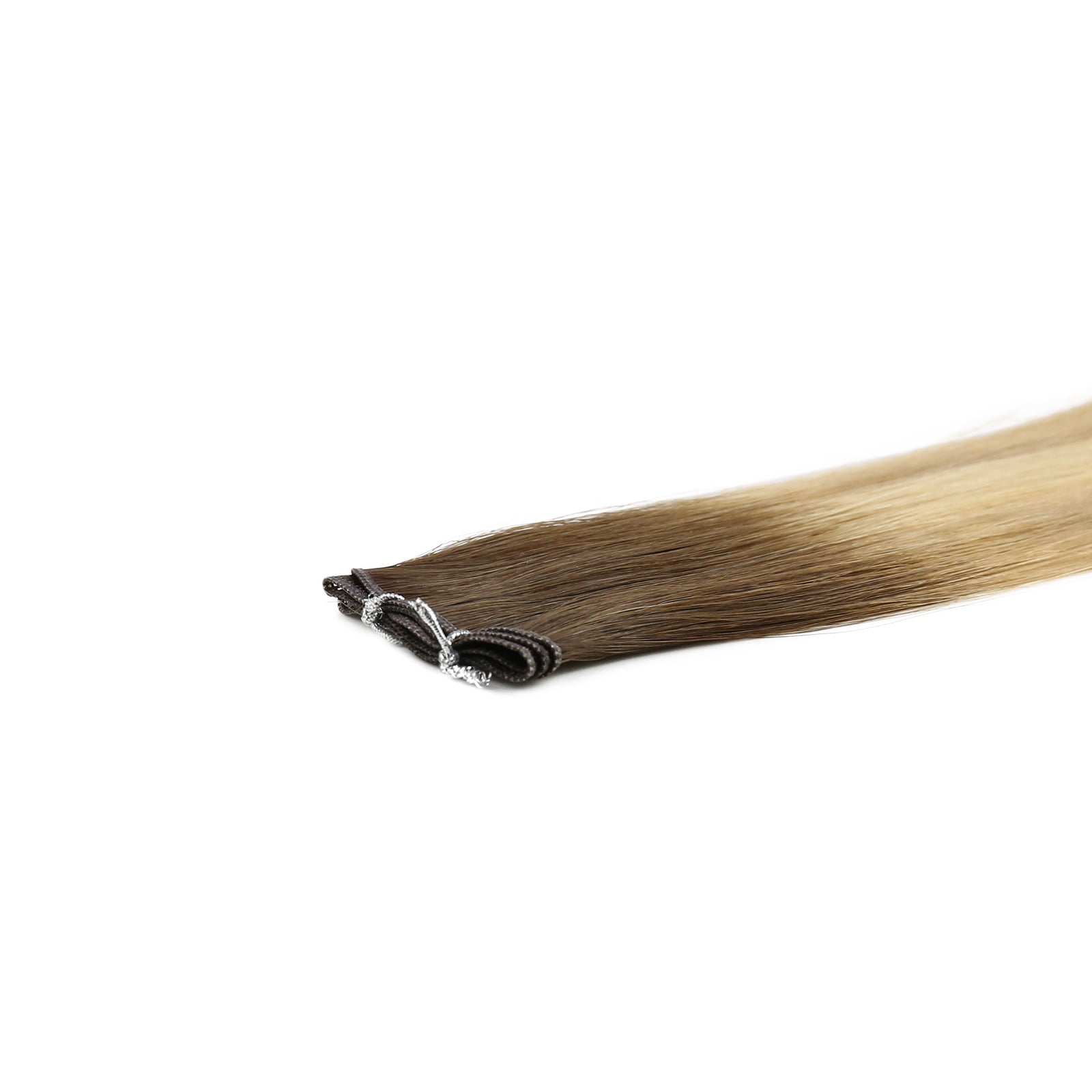Now that we’ve learned most of aspects of tape-in extension, knowing that tape-in extensions can be a great option for adding length and volume. Many of us have posed a question: are Tape-in Extensions Bad for Your Hair? This post will lead you to explore this topic.
Why do people concerned weather tape in extensions bad for hair?
There is not doubt that such question will be raised. Concerns about tape-in extensions generally stem from their potential impact on natural hair health and overall hair care. Here are some key reasons why people are cautious
-
Hair damage: Extensions can put stress on natural hair and scalp, especially if not applied or maintained correctly. The adhesive used in tape-ins might cause breakage if it pulls on the hair.
-
Scalp health: The adhesive can sometimes cause irritation or allergic reactions on the scalp, leading to discomfort or skin issues.
-
Hair growth disruption: Extensions can weigh down natural hair, potentially affecting its growth rate or causing thinning, especially if the extensions are too heavy or not properly cared for.
-
Maintenance needs: Extensions require regular upkeep, including repositioning and careful handling. Neglecting maintenance can lead to tangling, matting, or damage.
-
Long-Term effects: Prolonged use of extensions without proper care might lead to long-term hair issues, such as weakened hair strands or traction alopecia (a form of hair loss caused by constant pulling).
People are concerned about these issues because they want to ensure that their hair remains healthy, strong, and attractive over the long term. They seek to balance the benefits of added length or volume with the potential risks to their natural hair.
Tips to diminish the damage when using tape in extensions
Well, although tape in extensions are a good choice to achieve the length and volume of hair, they do have some potential drawbacks that might affect your natural hair. But if you follow a good aftercare routine maintaining good hair care practices, you can help diminish the potential damage that tape-in extensions may cause to your natural hair. Here are some tips:
-
Choose high-quality extensions: Opt for high-quality extensions made from natural hair. Quality extensions are less likely to tangle or cause stress on your natural hair.
-
Consult a professional: Have your extensions applied and removed by a certified hairstylist experienced in tape-in extensions. Proper application and removal techniques are crucial to prevent damage.
-
Ensure proper placement: The extensions should be placed a safe distance away from your scalp to avoid pulling on your natural hair roots. This can reduce the risk of traction alopecia.
-
Follow maintenance guidelines: Adhere to the maintenance schedule recommended by your stylist. This typically involves getting the extensions adjusted every 6-8 weeks as your natural hair grows.
-
Use gentle products: Use sulfate-free and alcohol-free hair products to avoid drying out both your natural hair and the extensions. Gentle shampoos and conditioners help maintain the health of your hair.
-
Avoid excess heat and chemicals: Minimize the use of heat styling tools and harsh chemicals on both your natural hair and the extensions. Heat can weaken the adhesive of tape-in extensions, leading to slippage or damage.
-
Detangle carefully: Be gentle when detangling your hair, especially near the roots where the extensions are attached. Use a wide-tooth comb or a special extension brush to avoid pulling on the bonds.
-
Give your hair breaks: Consider taking breaks between wearing extensions to allow your natural hair time to recover and breathe.
-
Monitor scalp health: Keep an eye on your scalp for any signs of irritation or discomfort. If you experience itching or redness, consult your stylist promptly.
-
Remove extensions properly: When it's time to remove the extensions, follow the proper removal process recommended by your stylist. Rushing the removal process can lead to unnecessary pulling and damage to your natural hair.
Alternatives to tape ins
If you're concerned about potential damage from tape-in extensions or simply want alternatives to achieve longer or thicker hair, here are some options to consider:
Clip in extensions: These are temporary extensions that you can clip into your hair for special occasions or daily use. They can be easily applied and removed without the need for adhesive or professional help.
Advantages
-
Structure: Clip-in extensions consist of small wefts of hair that have clips attached to them along the top. These clips allow you to attach the extensions securely to your natural hair.
-
Ease of Use: They are designed for easy application and removal, making them suitable for occasional use or special occasions. You can clip them in yourself at home without needing professional assistance.
-
Variety: Clip-in extensions come in various lengths, colors, and textures to match your natural hair or achieve a desired style. This versatility allows you to experiment with different looks without permanently altering your hair.
-
Flexibility: You can choose how many wefts to use depending on the amount of volume or length you want to add. This flexibility allows for customization based on your styling needs.
-
Non-Damaging: When applied and removed correctly, clip-in extensions are generally considered non-damaging to your natural hair. They do not involve adhesive or bonding agents that can potentially weaken or stress your hair.
-
Maintenance: Clip-in extensions require minimal maintenance compared to other types of extensions. You can wash them separately from your natural hair and store them properly to prolong their lifespan.
-
Affordability: They are typically more affordable than semi-permanent or permanent extension methods, making them accessible for those who want to change their hairstyle occasionally without a significant investment.
Sew-In or weave extensions: These extensions are woven or sewn into braided sections of your natural hair. They can last longer than tape-ins and are typically applied by a professional hairstylist. Proper installation and maintenance are crucial to prevent damage.
Advantages:
-
Durability: Sew-in extensions are typically more durable than clip-ins and can last several weeks to a few months with proper care. This makes them suitable for long-term wear.
-
Natural look: When applied correctly, sew-in extensions blend seamlessly with your natural hair, giving a more natural look and feel compared to some temporary extension methods.
-
Versatility: Sew-in extensions can be styled in a variety of ways, including straightening, curling, and braiding. They offer flexibility in achieving different looks without the limitations of some other extension types.
-
Reduced slippage: Unlike clip-ins or tape-ins, sew-in extensions are sewn directly into braids of your natural hair, which reduces the likelihood of slippage or shifting, ensuring that the extensions stay in place.
-
Minimal damage: Since sew-in extensions do not use adhesives or bonding agents, they are generally less damaging to your natural hair when applied and maintained correctly. They avoid the potential for adhesive-related breakage or scalp irritation.
-
Customizable: The extensions can be tailored to suit your hair type and desired style. A professional stylist can customize the weave to match your natural hair texture and color.
-
Low maintenance: While sew-ins do require regular upkeep, such as maintaining the braids and getting the extensions moved up as your hair grows, they are relatively low maintenance compared to some other extension types.
-
Scalp protection: The extensions are sewn into braided sections of your natural hair, which can provide a layer of protection for your scalp, especially if you have sensitive skin.
-
Cost-Effective: Compared to some other extension methods, sew-ins can be a more cost-effective option, especially considering their durability and the potential for reuse with proper care.
Conclusion
In conclusion, all of hair extensions have their merits and demerits. No matter what kind of hair extensions, it will bear some damage to your hair more or less. What is most important is that you should have them installed and removed by a professional to minimize any risk of damage. Proper care and maintenance are essential to ensure the longevity of both the extensions and your natural hair.
